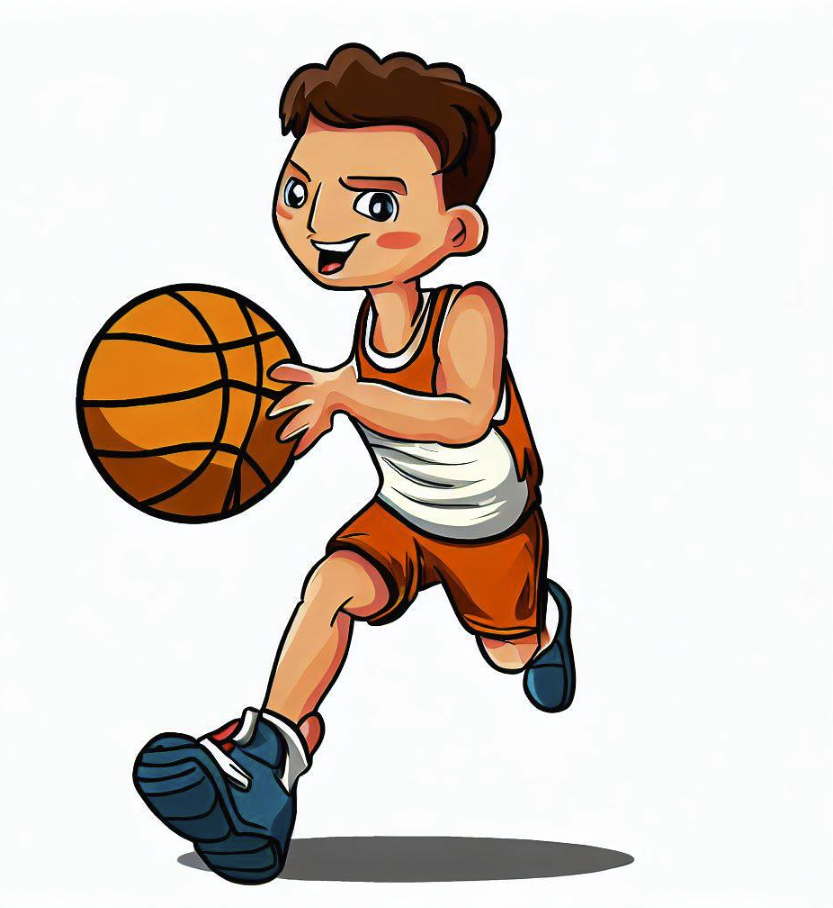Rebounding is a critical aspect of basketball that can greatly impact the outcome of a game.
It involves gaining possession of the ball after a missed shot, providing the team with another scoring opportunity.
Effective rebounding requires a combination of skill, technique, and athleticism.
Below we look at various basketball rebounding drills that can help players improve their rebounding abilities and contribute to their team’s success.
The Importance of Rebounding in Basketball
Rebounding is often referred to as the “hidden statistic” in basketball, as it does not receive as much attention as scoring or assists.
However, it plays a vital role in determining the outcome of games.
Here are a few reasons why rebounding is important:
- Second-chance opportunities: Offensive rebounds give the team another chance to score, extending possessions and putting pressure on the opposing defense.
- Limiting opponent’s scoring: Defensive rebounds prevent the opposing team from getting easy put-backs or second-chance points.
- Controlling the tempo: Rebounding allows a team to control the pace of the game by either pushing the ball in transition or slowing it down.
- Building momentum: A strong rebound can energize the team and provide a boost in confidence.
Rebounding Fundamentals
Before diving into specific rebounding drills, it is essential to understand the fundamental techniques involved in rebounding.
These techniques form the foundation for successful rebounding:
- Boxing out: This technique involves establishing position between the opponent and the basket, using your body to create space and prevent the opponent from getting the rebound.
- Timing: Rebounding requires good timing to anticipate the trajectory of the ball and jump at the right moment.
- Jumping ability: A strong vertical leap is advantageous in securing rebounds, especially in contested situations.
- Hand-eye coordination: Being able to track the flight of the ball and react quickly is crucial in grabbing rebounds.
Rebounding Drills
Now that we have covered the importance of rebounding and the fundamental techniques, let’s explore some effective rebounding drills that can help players improve their skills:
1. Box Out Drill
This drill focuses on teaching players how to establish and maintain proper positioning to secure rebounds.
Here’s how it works:
- Divide the players into pairs, with one player designated as the offensive player and the other as the defensive player.
- The offensive player attempts to grab the rebound while the defensive player focuses on boxing out and preventing the offensive player from getting the ball.
- Emphasize the importance of maintaining contact and using proper footwork to gain an advantage.
- Rotate roles after a set number of repetitions to give each player a chance to practice both offensive and defensive rebounding.
2. Tip Drill
This drill helps players develop their hand-eye coordination and reaction time when going for tip-ins or tip-outs.
Here’s how to perform the tip drill:
- Form two lines of players facing each other, with one line positioned under the basket and the other line at the free-throw line.
- The coach or a player shoots the ball towards the rim, and the players in the line under the basket attempt to tip the ball in.
- The players at the free-throw line focus on tipping the ball out to their teammates.
- Encourage players to use both hands and work on their timing to maximize their chances of tipping the ball successfully.
3. Rebound and Outlet Drill
This drill simulates game-like situations where players need to secure the rebound and make a quick outlet pass to initiate a fast break.
Here’s how to execute the rebound and outlet drill:
- Divide the players into two teams, with one team positioned under the basket as the offensive team and the other team positioned near half-court as the defensive team.
- The coach or a player takes a shot, and both teams compete for the rebound.
- The player who secures the rebound quickly looks for an outlet pass to start a fast break.
- Emphasize the importance of making accurate and quick outlet passes to maintain the momentum of the fast break.
4. Rebound and Finish Drill
This drill focuses on improving players’ ability to secure rebounds and finish around the basket.
Here’s how to perform the rebound and finish drill:
- Position a coach or a player near the basket, ready to shoot.
- Two players start on opposite sides of the key, facing each other.
- The coach or player takes a shot, and both players compete for the rebound.
- The player who secures the rebound attempts to finish with a layup or a put-back.
- Encourage players to use proper footwork and body control to convert the rebound into points.
Some other ideas we cover below.
3 Best Basketball Rebounding Drills that WIN GAMES!
FAQs – Basketball Rebounding Drills
1. What are some drills to improve boxing out?
One effective drill to improve boxing out is the “Warrior Rebounding Drill.”
In this drill, players form two lines facing each other under the basket.
The coach or a player shoots the ball, and the players compete for the rebound while focusing on maintaining proper boxing out technique.
The player who successfully boxes out and secures the rebound earns a point for their team.
2. How can I improve my timing for rebounds?
Improving timing for rebounds requires practice and repetition.
One drill that can help is the “Rebound Reaction Drill.”
In this drill, players stand facing away from the basket, and the coach or a teammate throws the ball off the backboard.
The players must react quickly, turn around, and jump to grab the rebound.
This drill helps develop quick reflexes and improves timing when going for rebounds.
3. Are there any specific drills to improve offensive rebounding?
Yes, there are several drills that can help improve offensive rebounding skills.
One effective drill is the “Put-Back Drill.”
In this drill, a coach or player takes a shot, and the offensive player focuses on grabbing the rebound and scoring with a put-back.
This drill helps players develop their timing, positioning, and finishing ability around the basket.
4. How can I increase my vertical leap for better rebounding?
Increasing your vertical leap requires a combination of strength training and plyometric exercises.
Some exercises that can help improve your vertical leap include squats, lunges, box jumps, and depth jumps.
Additionally, incorporating jump rope exercises and practicing jumping techniques, such as the “Jump and Reach Drill,” can also contribute to increasing your vertical leap.
5. Are there any rebounding drills for guards?
While rebounding is often associated with big men in basketball, guards can also benefit from improving their rebounding skills.
One drill that can help guards improve their rebounding is the “Guard Rebounding Drill.”
In this drill, guards practice boxing out and securing rebounds against a coach or a teammate.
Emphasize the importance of positioning, timing, and using their quickness to gain an advantage.
6. How can I become a better rebounder without height advantage?
While height can be an advantage in rebounding, it is not the sole determining factor.
Players without a height advantage can still become effective rebounders by focusing on other aspects such as positioning, timing, and technique.
Developing a strong lower body through strength training can also help generate power for jumping and competing for rebounds.
7. Are there any rebounding drills for youth players?
Yes, there are several rebounding drills suitable for youth players. One example is the “Rebound Relay Drill.”
In this drill, players form two teams and line up on opposite sides of the key.
The coach or a player shoots the ball, and the first player from each team competes for the rebound.
The player who secures the rebound quickly passes the ball back to their teammate in line, and the process continues.
This drill helps develop rebounding skills while incorporating an element of competition.
8. How can I improve my reaction time for rebounds?
Improving reaction time for rebounds requires training the mind and body to react quickly.
One drill that can help is the “Reaction Ball Drill.”
In this drill, players stand facing a wall and throw a reaction ball against it.
The ball bounces off the wall in unpredictable directions, forcing the player to react quickly and catch the ball.
This drill helps improve hand-eye coordination and reaction time, which are essential for grabbing rebounds.
9. Are there any rebounding drills for teams with limited practice space?
Yes, there are rebounding drills that can be adapted to limited practice space. One example is the “Chair Rebounding Drill.”
In this drill, players set up chairs or cones in a confined area to simulate opponents.
The offensive player attempts to grab the rebound while navigating around the chairs or cones, mimicking game-like situations with limited space.
This drill helps players develop their rebounding skills while adapting to space constraints.
10. How can I improve my focus and concentration for rebounds?
Improving focus and concentration for rebounds requires mental preparation and practice.
One technique is visualization, where players mentally rehearse scenarios and visualize themselves successfully grabbing rebounds.
Another approach is incorporating mindfulness exercises into training, such as deep breathing and meditation, to enhance focus and concentration.
Consistent practice and maintaining a positive mindset can also contribute to improved focus during games.
Summary
Rebounding is a critical aspect of basketball that can greatly impact a team’s success.
By incorporating various rebounding drills into their training regimen, players can improve their skills in boxing out, timing, hand-eye coordination, and jumping ability.
These drills help players develop the fundamental techniques required for effective rebounding and contribute to their team’s overall performance.
Remember, rebounding is not solely dependent on height, and players of all positions can become effective rebounders by focusing on positioning, technique, and effort.
Related


